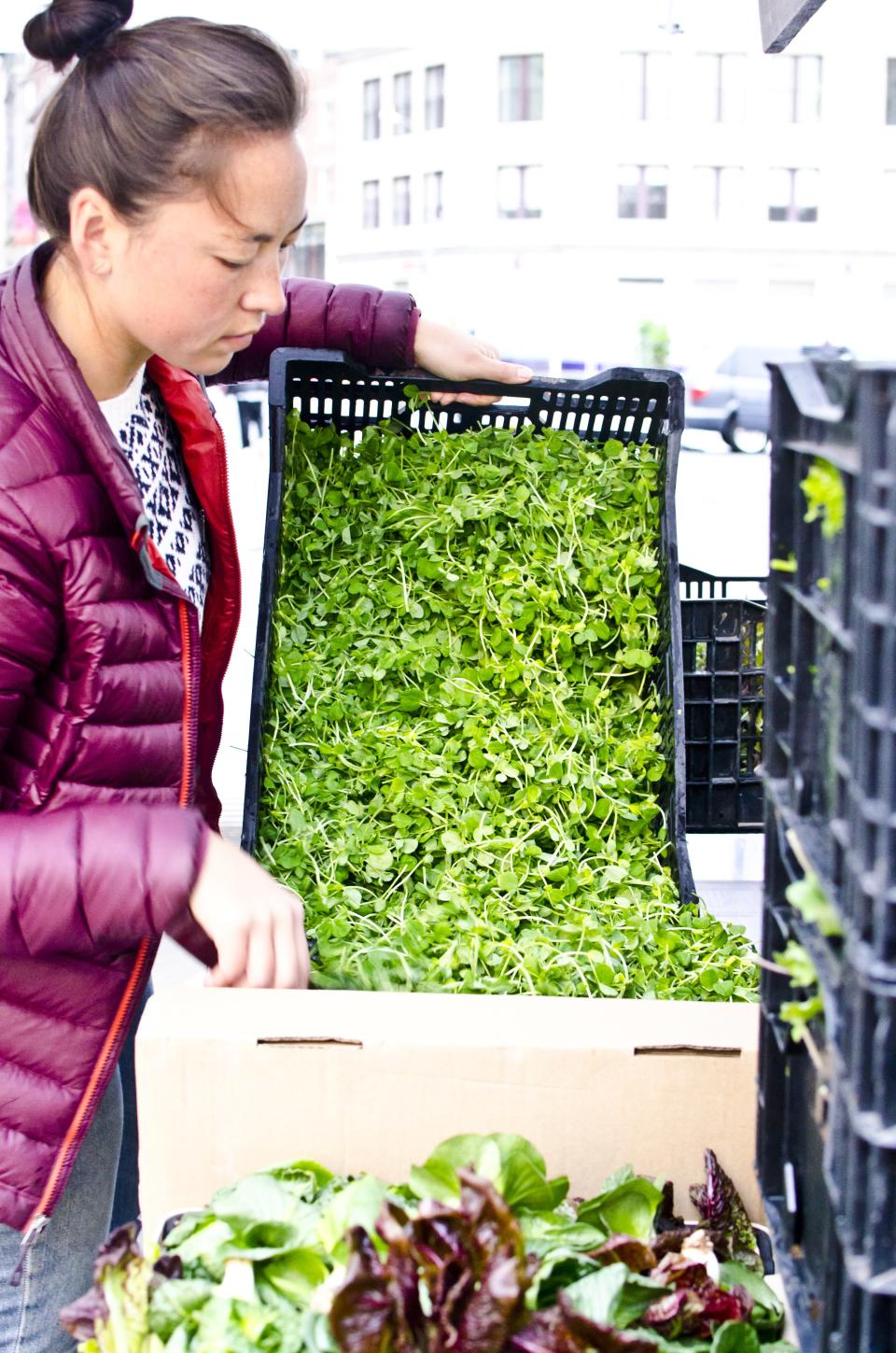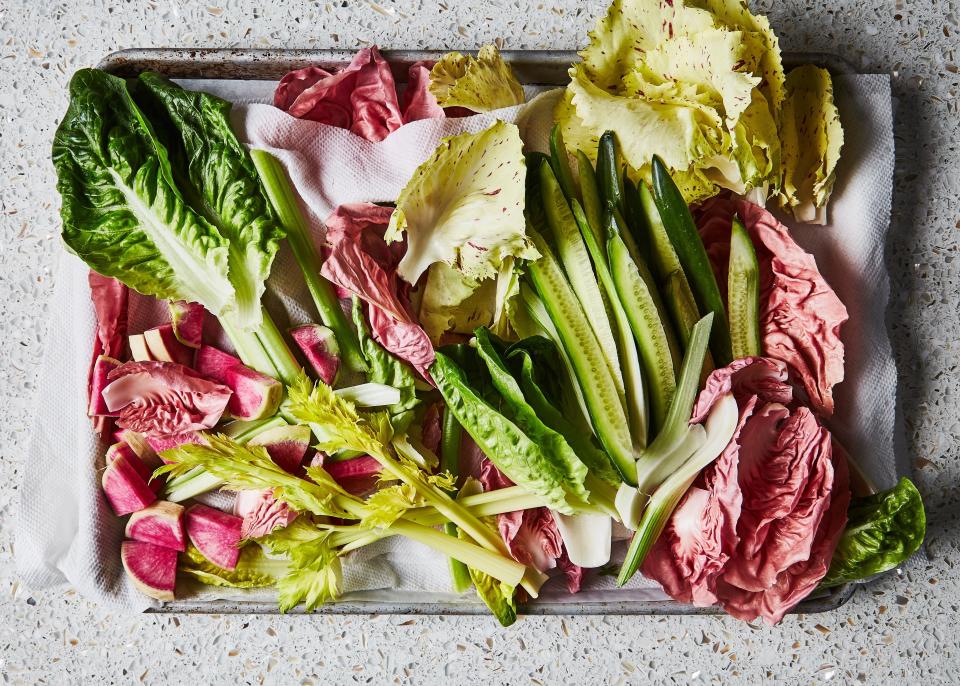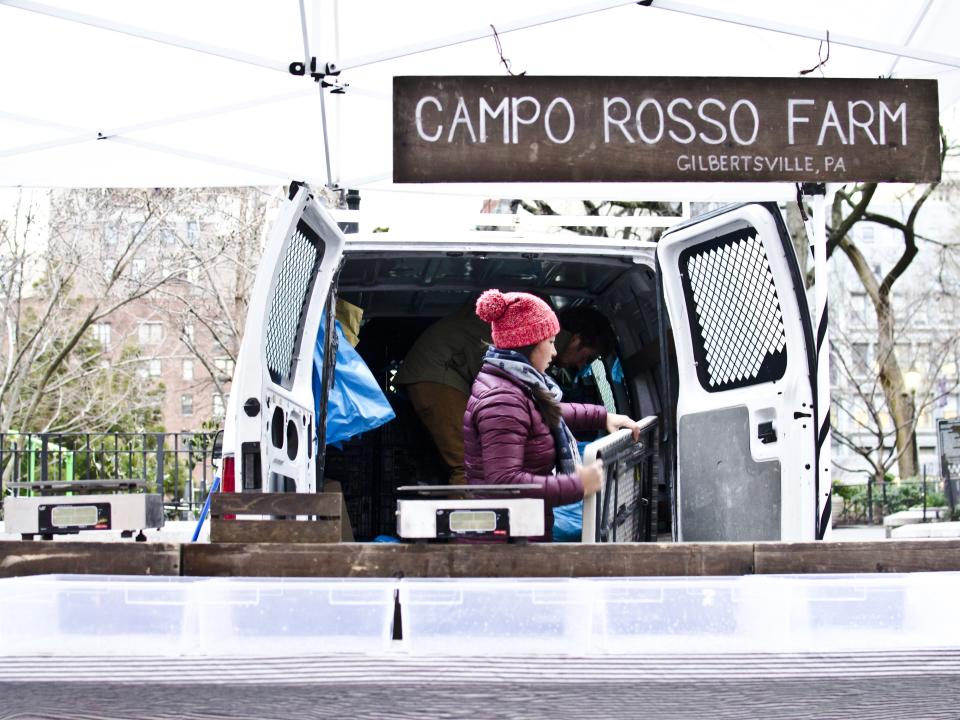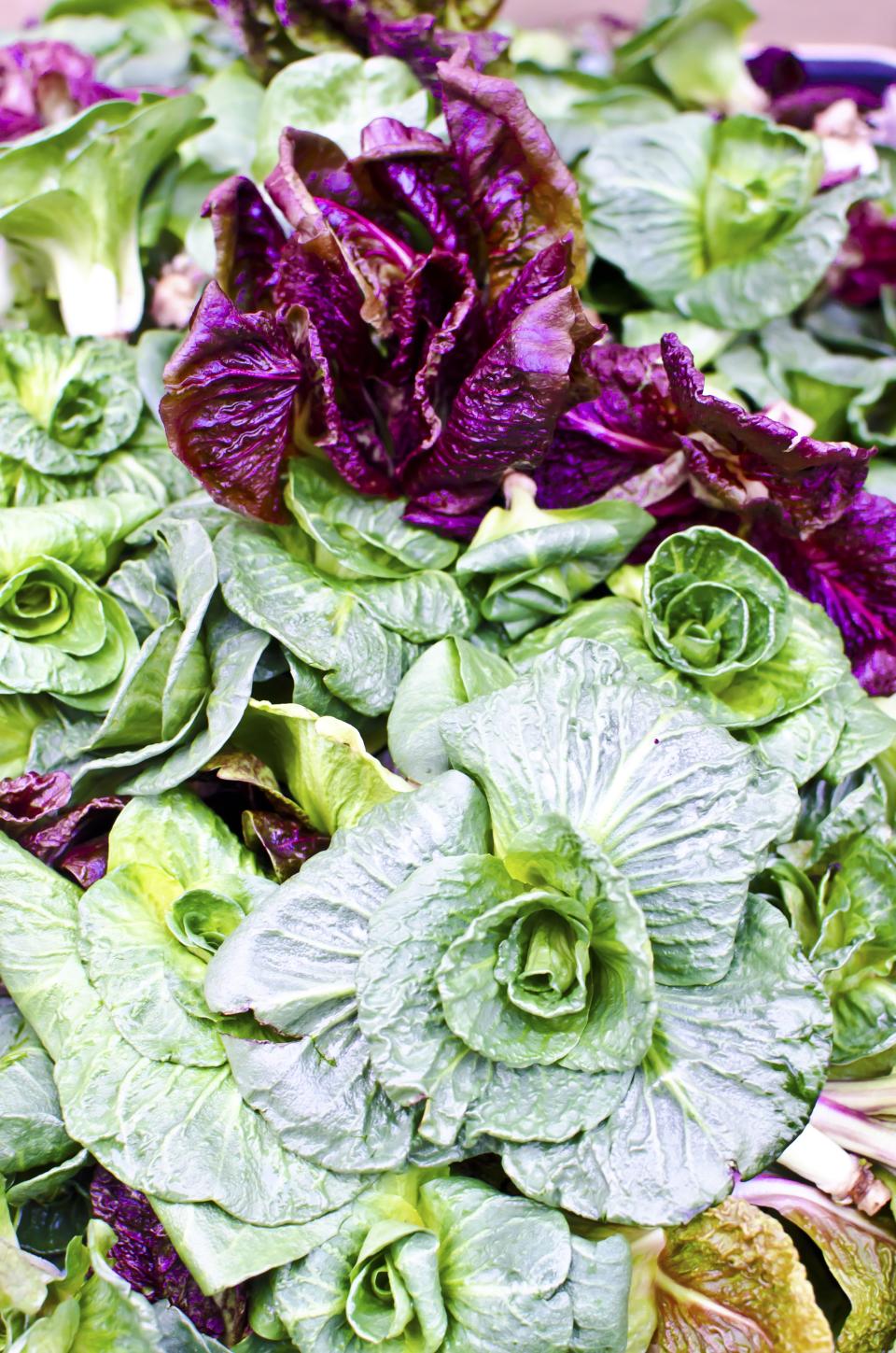The Greens That Chefs Go Crazy For
By Ali Francis. Photos by: Ali Francis and Alex Lau.
This story is part of our Guide to Modern Homesteading. Read the other stories in the series here.
The sun is only just kissing the tips of the tallest buildings, while cars zip by in the shadows below. Farmers dump bags of carrots into big plastic bins, tents languidly unfurl as if from a deep sleep, and steam trails off a piping hot thermos of apple cider. The only sounds are clunking crates, the beep of reversing trucks, and the soft thud of a jogger’s gait.
The Union Square Greenmarket is eerily empty at 6 a.m. on a Friday morning—a fleeting hiatus in the city that never sleeps. Chris Field and Jessi Okamoto are the exception: They’re busy pulling plump, over-wintered spinach, delicate golden and ruby-frill mustard, purple mizuna, spicy wild arugula, sweet pea shoots, and the most beautiful chicory rosettes I’ve ever seen from their mud-caked white van. Finally, they hang their wooden sign: “Campo Rosso Farm, Gilbertsville, PA.” The final touch is complete before most of their customers are awake.
“We were just so sick of paying $1600 for rent,” says Field, of their prior New York City life. “And with our crazy schedules, we literally never saw each other.” The Florida ex-pats had been propelled to the city—Field was a sous chef Jim Lahey's pizza joint Co. and later at Sullivan Street Bakery, and Okamoto found retail work in SoHo. “I majored in Political Science, which, you know, is useless,” Okamoto says.
Soon the appeal of slow-fermented doughs and hand-harvested wild yeast wore off, replaced by a reverence for market-driven ingredients. “I was buying a lot from [Union Square Greenmarket] for the restaurants,” says Field. “The more I would buy, the better friends I was becoming with all the farmers.”
After a spring sojourn foraging for ramps in the Catskills with market farmer Rick Bishop from Mountain Sweet Berry Farm in the spring of 2010, they cut the cord. “We still have the crappy map he drew us at home,” laughs Field. Little did Bishop know his invitation would lure Field and Okamoto away from city life for good. The couple moved to Roscoe (in the western Catskills) in 2011 and spent nearly the next two years absorbing their new tutor’s agricultural strategies before finding work with Tim Stark, author and prodigious producer of tomatoes and chiles at Eckerton Hill Farm in Berks County, Pennsylvania. Now, just 25 miles to the southeast, Field and Okamoto grow specialty chicory, greens, and radicchio for some of the city’s finest restaurants.
By 7 a.m., the market’s in full swing. The whole time we’re talking, Field and Okamoto are being interrupted by line cooks and chefs, placing their morning orders: a variety of greens for Cookshop; 50 pounds of pea shoots for a simple, lemon-dressed salad at Franny’s; and all of the chicory rosettes they’ve got for Andrew Luzmore, the market forager at Blue Hill Stone Barns. (Followed by an incredulous, “Don’t they have their own farm?!” from a passing baker looking for hibiscus to preserve.)
Yet to be seen is Suzanne Cupps, executive chef at Untitled at the Whitney and loyal Campo Rosso customer, whose cooks usually stop by twice a week throughout the year. “Every fall we run a chicory salad especially to feature what they grow,” Cupps says when we talk later. On her menu, you’ll find specialty varietals like tardivo, treviso, radicchio bianco, Italian endive, frisee, pink radicchio, rosa di gorizia, and puntarelle. “There isn’t another farm in the U.S growing the variety of Italian chicories they do, and they do it at an incredibly high quality.” And Campo Rosso's specialization doesn’t stop with the chicory family. “They’ve chosen very specific varieties of tomatoes and peppers that are, first and foremost, delicious, but they’re also new to our markets,” Cupps says. “It’s so much fun to explore and taste the foods that they grow.”
At Gramercy Tavern, Campo Rosso winter chicories, baby greens, tomatoes, brassicas, and fava beans are regulars on the menu. “This food simply tastes better, and we want to support the hardworking people from our own community,” says chef Mike Anthony.
Okamoto echoes these challenges and is not one to romanticize the whole farm-to-table movement. In truth, it's a hard life. The machinery's expensive; finding seasonal labor is usually dependent on being able to provide housing, which Field and Okamoto don't have; and cash flow is tight during the winter months. Most days, even in peak season, she and Field are the farm's only workers.
“It’s physically so exhausting,” she says. “Every single day, our bodies hurt.” But even with labor challenges and frigid winters, Field and Okamoto don’t regret leaving New York. In Pennsylvania, they’re surrounded by a community of young farmers and artisans, trading fresh produce for local milk and craft beers. In the city, they’re slinging vegetables to restaurants before heading to Buon'Italia in Chelsea Market to stock up on imported cheeses. “For us, this is the ideal—we can keep our fancy-food lifestyle and live in the country,” says Field.
As I alternate bites of fresh-baked sourdough and sweet carrots on the filthy L-train back to Brooklyn, I think they’re probably onto something.
This story originally appeared on Bon Appetit.
More from Bon Appetit:
58 Dishes to Bring to an Outdoor Party
40 Avocado Recipes, So You Can Eat as Much Avocado as Possible
24 Recipes Everyone Should Know How to Cook
32 Recipes to Make in Your Cast Iron Pan





